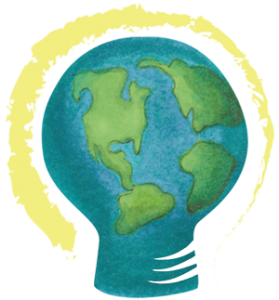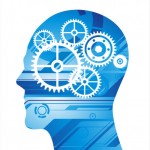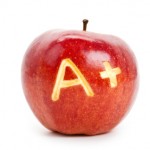 The Fusion Early Learning Family of businesses include Curriculum Products, Preschool Centers, Parent Co-ops and Industry Consultants. It is the product of many years of experience in a variety of Early Education fields all inspired by educational neuroscience and a mission to bridge the gap between early childhood education and the k-12 education system.
The Fusion Early Learning Family of businesses include Curriculum Products, Preschool Centers, Parent Co-ops and Industry Consultants. It is the product of many years of experience in a variety of Early Education fields all inspired by educational neuroscience and a mission to bridge the gap between early childhood education and the k-12 education system.
- Our Philosophy
- Learning Environments
- Thematic Settings
- Learning Goals
- Lesson Planning & Teaching
- Measuring The Outcome
- Why It Works
 In the educational climate of today there is a disconnect between the philosophies of early childhood education and those practiced in elementary education and beyond. Most early learning programs to some extent subscribe to a “learning through play” approach while most elementary schools teach through traditional direct instruction methods. Fusion Preschools bridge this gap by combining philosophies to provide a unique approach to early learning.
In the educational climate of today there is a disconnect between the philosophies of early childhood education and those practiced in elementary education and beyond. Most early learning programs to some extent subscribe to a “learning through play” approach while most elementary schools teach through traditional direct instruction methods. Fusion Preschools bridge this gap by combining philosophies to provide a unique approach to early learning.
The curriculum at Fusion Preschools is created by carefully studying Content Standards for Kindergarten and First Grade. We translate these standards into developmentally appropriate learning goals for preschool. This approach produces students who not only meet but exceed academic and developmental pre-k requirements. Academic subjects taught are synonymous with those taught in elementary schools.
Students experience these subjects through intricate themes throughout the school year. Throughout a theme, students are immersed in magical places and times. Themes not only provide a context for learning but provide additional educational opportunities in the realms of science, mathematics, history, literature, art and culture. Perfectly balanced combinations of teacher-directed and child-directed classes guarantee that each lesson is both challenging and developmentally appropriate. Realistic curriculum goals are set to ensure that students have the opportunity to experience success on a daily basis.
The curriculum is also designed to be individually appropriate and challenge students so that they begin to develop a passion for learning. The environment at Fusion Schools is also uniquely designed to deliver the curriculum. It invites the young learner to be an active explorer while rotating through classrooms geared towards teaching particular subject matters. The environment urges them to participate in both group and individual activities exposing them to an endless array of educational opportunities.
Fusion Early Learning allows children the opportunity to learn and enhance the skills necessary for academic and social success. Fusion graduates will enter their elementary education careers academically, developmentally and socially prepared for the adventures that await them.
 The learning environments in our preschools are divided into three classrooms to provide the most comprehensive learning experience possible for young learners. Each classroom is designed to teach specific subjects. Students rotate through each classroom throughout the school day so that they may take advantage of all educational opportunities offered. Students spend their day with the same group of students so that they may effectively create bonds of friendship with their classmates. Groups are determined by age and developmental ability.
The learning environments in our preschools are divided into three classrooms to provide the most comprehensive learning experience possible for young learners. Each classroom is designed to teach specific subjects. Students rotate through each classroom throughout the school day so that they may take advantage of all educational opportunities offered. Students spend their day with the same group of students so that they may effectively create bonds of friendship with their classmates. Groups are determined by age and developmental ability.
Blue Room
In the Blue Room students learn Reading, Writing, Listening and Speaking skills. While the Blue Room focuses on all the basic early learning concepts (i.e. alphabet, name writing, etc.), it also places an emphasis on other more advanced concepts such as predicting the outcome of a story, comprehending and retelling a story, becoming familiar with sight words, the accompaniment of vocabulary words to a story and being introduced to short novels such as Usborne’s King Arthur.
Green Room
The Green Room focuses on teaching students Math, Science, Social Science and History. Basic early learning concepts such as numbers and shapes are worked into lessons on a daily basis. The monthly theme determines whether lessons will place an emphasis on History, Social Science, Physical Science or Earth Science. For example, a theme such as Biomes and Ecosystems would focus on Earth Science while a theme such as Medieval Times would focus on History and Social Science.
Red Room
The Red Room focuses on providing experiences based on Visual Arts, Theater, Music and Dance. All artistic experiences are related to the monthly theme. For example, during the Medieval Times theme students would be creating clothing and jewelry from that time period while listening to Renaissance music, thus focusing on Visual Arts and Music throughout the month.
 Students are introduced to new subject matter each month through highly organized thematic settings. Thematic settings are designed to provide an engaging learning environment through which lessons are taught. Each thematic setting comes with a new set of Learning Goals and Sub Themes for each classroom.
Students are introduced to new subject matter each month through highly organized thematic settings. Thematic settings are designed to provide an engaging learning environment through which lessons are taught. Each thematic setting comes with a new set of Learning Goals and Sub Themes for each classroom.
The following are examples of some thematic units that you may see throughout the school year:
- Biomes & Ecosystems
- Exploring the Universe through Literature and Science
- A Culinary Tour of the World
- Culture Shock: Authors, Inventions and Music that Changed the World
- The Mesozoic Era: Paleontology and the World of David Krentz
 The Learning Goals created for Fusion Early Learning were developed through the careful study of content standards for Kindergarten and First Grade. What has resulted are Learning Goals that not only challenge students on a daily basis, but also meet their developmental needs. Fusion’s Learning Goals are divided into three categories: Primary Learning Goals, Secondary Learning Goals and Ongoing Learning Goals.
The Learning Goals created for Fusion Early Learning were developed through the careful study of content standards for Kindergarten and First Grade. What has resulted are Learning Goals that not only challenge students on a daily basis, but also meet their developmental needs. Fusion’s Learning Goals are divided into three categories: Primary Learning Goals, Secondary Learning Goals and Ongoing Learning Goals.
Primary Learning Goals
Primary Learning Goals are theme-based. They are the actual information to be learned throughout the month. The Primary Learning Goal is typically not concept-based, but information-based (i.e. What does an herbivorous dinosaur eat?).
Secondary Learning Goals
Secondary Learning Goals are the concept-based goal(s) of the month. The Secondary Learning Goal is a concept that can be taught through the use of the theme and is usually a skill of some sort that students need to acquire (i.e. using dinosaur fossils to learn to add and subtract).
Ongoing Learning Goals
Ongoing Learning Goals are also concept-based. They are goals that can be achieved or taught on a daily basis and worked into nearly any lesson (i.e. recognizing and writing the letters of the alphabet). Ongoing Learning Goals are addressed on a continual basis throughout the school year.
 The Fusion Early Learning curriculum is unique in many ways. It is a comprehensive system of learning for both early childhood educators and their students. It gives teachers the guidance they need to successfully create lessons while empowering them as an educator. Fusion teachers are as unique as the curriculum they provide. Their sense of ownership and dedication is unmatched in the industry. Our teachers will never underestimate your child’s capacity to learn, or fail to challenge them as they grow. Fusion Early Learning Preschools are the only preschools that provides 3 distinct, highly organized lesson plans for every day your child attends.
The Fusion Early Learning curriculum is unique in many ways. It is a comprehensive system of learning for both early childhood educators and their students. It gives teachers the guidance they need to successfully create lessons while empowering them as an educator. Fusion teachers are as unique as the curriculum they provide. Their sense of ownership and dedication is unmatched in the industry. Our teachers will never underestimate your child’s capacity to learn, or fail to challenge them as they grow. Fusion Early Learning Preschools are the only preschools that provides 3 distinct, highly organized lesson plans for every day your child attends.
Teachers at Fusion Preschools plan lessons that contain four separate components creating a consistent platform on which students may learn: Engaging Factor, Lesson Phase 1, Lesson Phase 2 and Lesson Phase 3.
Engaging Factor
An Engaging Factor is the tool a teacher uses to get students excited about the subject or concept they are about to learn. The Engaging Factor appeals to the inquisitive nature of young children and is used before the actual start of the lesson.
Lesson Phase 1
Phase 1 of the lesson is used to introduce students to the subject or concept they are about to learn. Phase 1 of the lesson usually takes place on the carpet and often involves a brief discussion of some sort or the reading of a book or story.
Lesson Phase 2
Phase 2 of the lesson is the “meat” of the lesson. This is where the actual teaching takes place in the form of an Activity Based Lesson, Discussion Based Lesson, Project Based Lesson or Station Based Lesson.
Lesson Phase 3
Phase 3 of the lesson is a time to reconvene as a group and discuss what has been learned. It is also a time to check for understanding of the day’s concepts by asking questions. Phase 3 of the lesson gives closure to the events of the class and gives students the ability to easily move from one subject to the next.
 Fusion Early Learning Preschools assess all students prior to graduation. We feel that it is essential that parents are aware of the academic and social status of their child’s education before entrance into the world of elementary education. At the end of each school year Directors meet with all graduating students individually to assess them in several areas: Reading Comprehension, Writing Skills, Listening Skills, Number Sense, Letter Recognition, Fine Motor Skills (i.e. cutting, coloring, holding a pencil), Counting Skills, Shape Recognition, Color Recognition, and Directional Awareness (i.e. left, right, above, below, etc.). Assessments are based on skills and concepts students need to acquire prior to entering the first grade. Once assessments are complete, Directors meet with parents to discuss the results. The assessment is given to the parent so it can also be a tool for them to track their child’s progress throughout the Kindergarten year, ensuring that all skills are mastered before entrance into the first grade.
Fusion Early Learning Preschools assess all students prior to graduation. We feel that it is essential that parents are aware of the academic and social status of their child’s education before entrance into the world of elementary education. At the end of each school year Directors meet with all graduating students individually to assess them in several areas: Reading Comprehension, Writing Skills, Listening Skills, Number Sense, Letter Recognition, Fine Motor Skills (i.e. cutting, coloring, holding a pencil), Counting Skills, Shape Recognition, Color Recognition, and Directional Awareness (i.e. left, right, above, below, etc.). Assessments are based on skills and concepts students need to acquire prior to entering the first grade. Once assessments are complete, Directors meet with parents to discuss the results. The assessment is given to the parent so it can also be a tool for them to track their child’s progress throughout the Kindergarten year, ensuring that all skills are mastered before entrance into the first grade.
 The unique design of the Fusion Early Learning Curriculum as well as the functionality of the preschool environment is what makes our students strive to learn. Fusion Kids are constantly engaged in the learning process ultimately eliminating most behavioral issues in the classroom. This allows teachers and students to focus on and take advantage of the educational opportunities being offered. Fusion Early Learning Preschools produce graduates that are academically and socially ready for the educational adventures that await them. Most Fusion graduates enter Kindergarten above grade-level. Many are placed in combination Kindergarten/First-Grade classes so that they continue to be challenged in their first year of elementary education. To ensure that your preschooler experiences the same success, give your little one the opportunity to begin their academic career at the age of 3, spending at least two years in a Fusion Preschool.
The unique design of the Fusion Early Learning Curriculum as well as the functionality of the preschool environment is what makes our students strive to learn. Fusion Kids are constantly engaged in the learning process ultimately eliminating most behavioral issues in the classroom. This allows teachers and students to focus on and take advantage of the educational opportunities being offered. Fusion Early Learning Preschools produce graduates that are academically and socially ready for the educational adventures that await them. Most Fusion graduates enter Kindergarten above grade-level. Many are placed in combination Kindergarten/First-Grade classes so that they continue to be challenged in their first year of elementary education. To ensure that your preschooler experiences the same success, give your little one the opportunity to begin their academic career at the age of 3, spending at least two years in a Fusion Preschool.